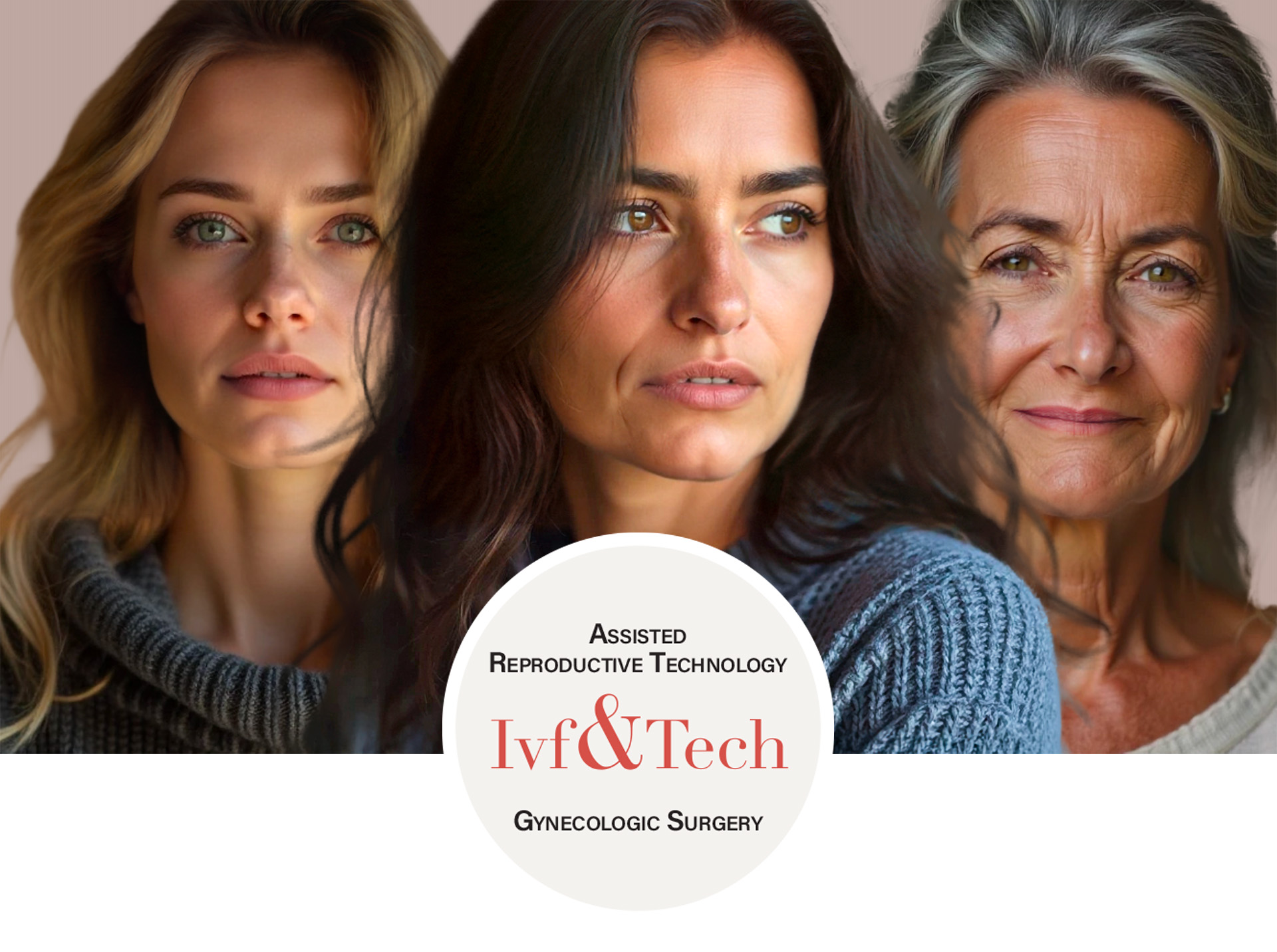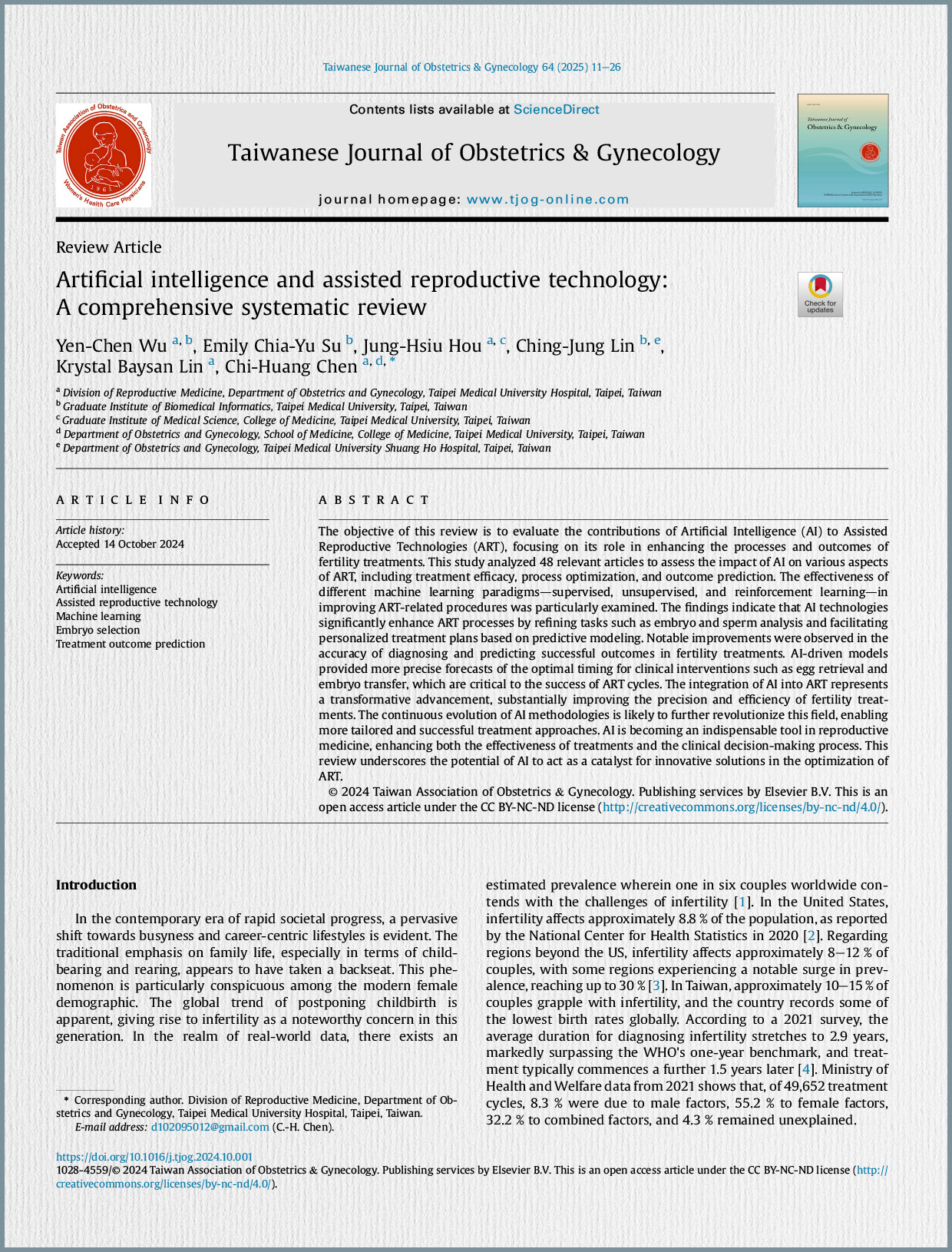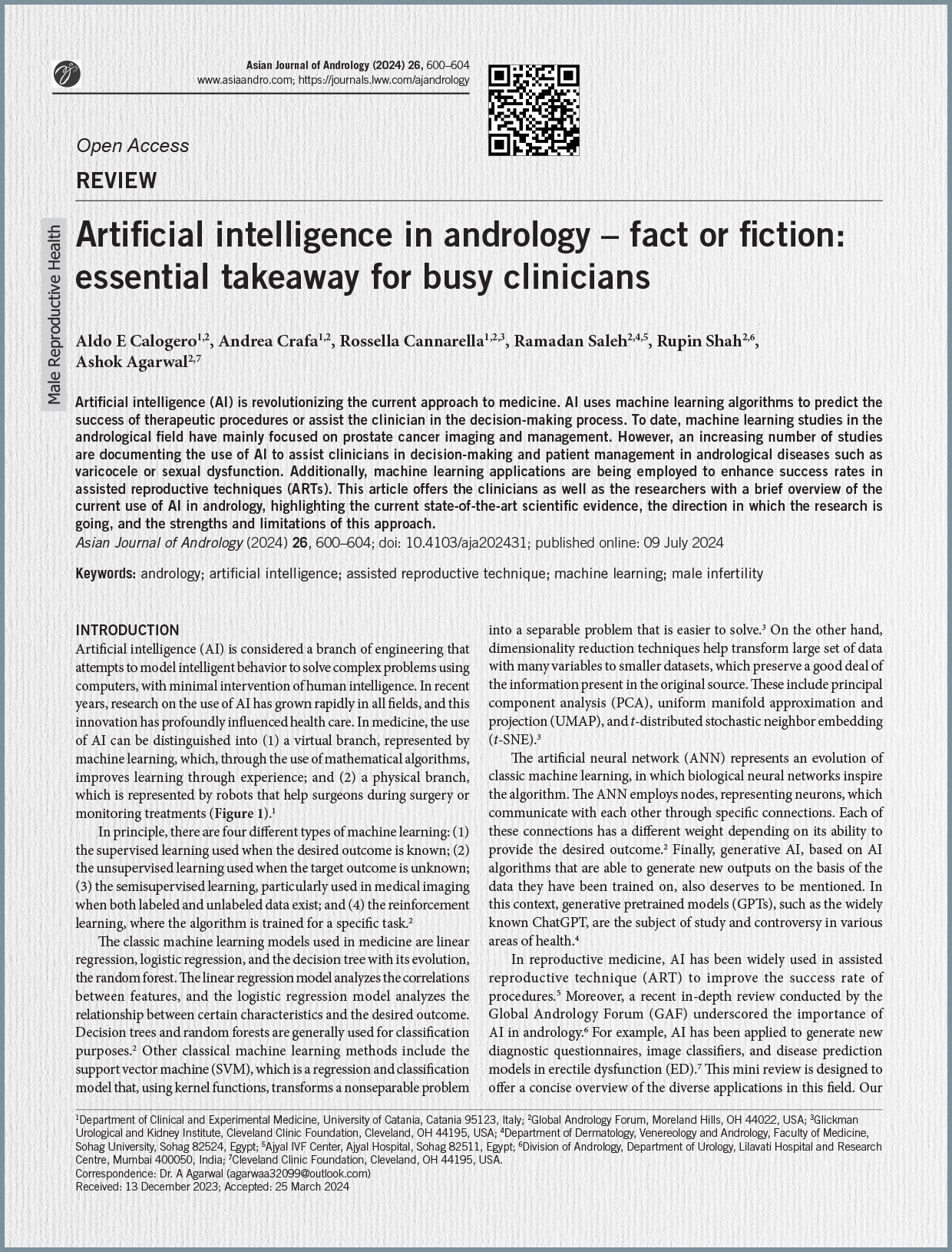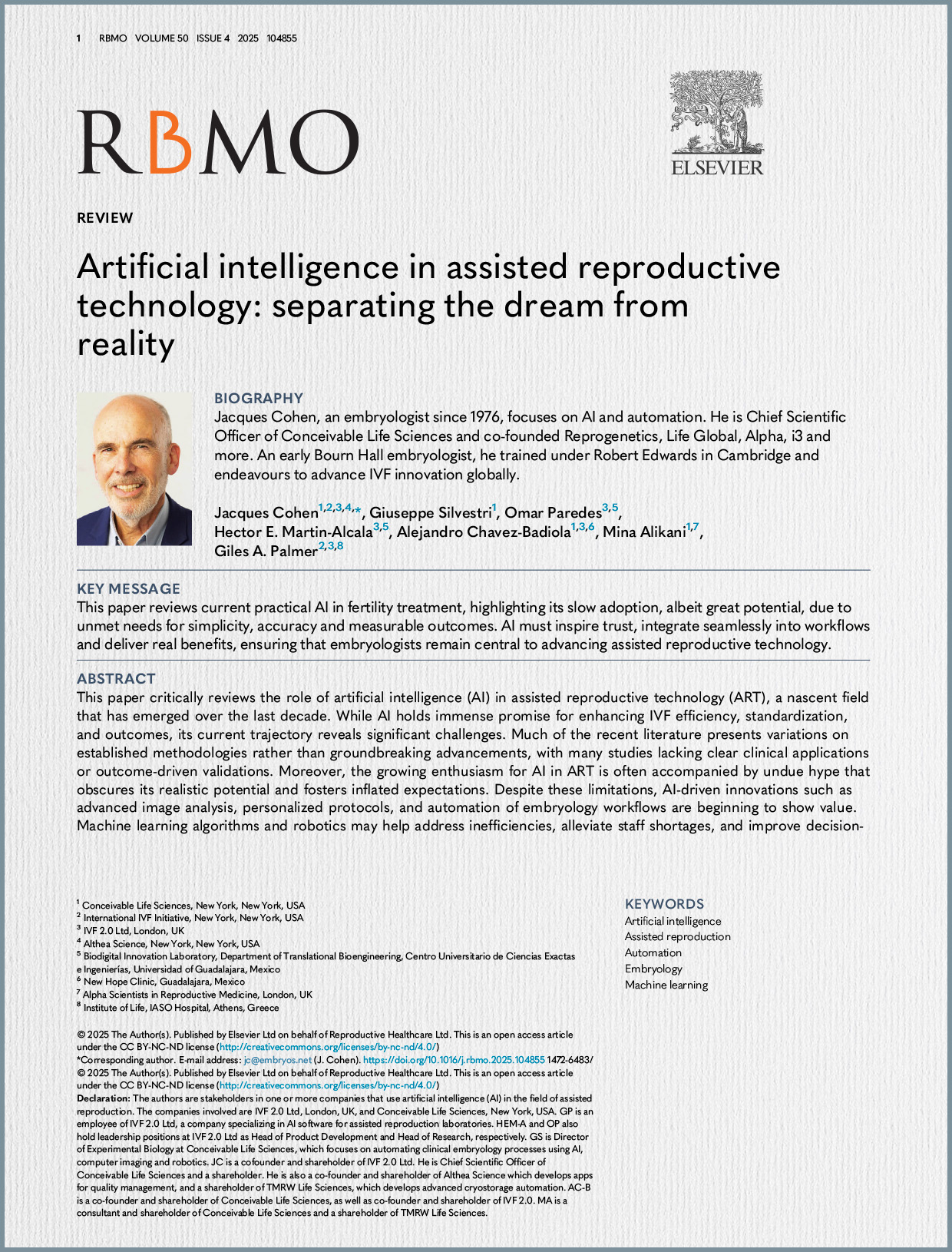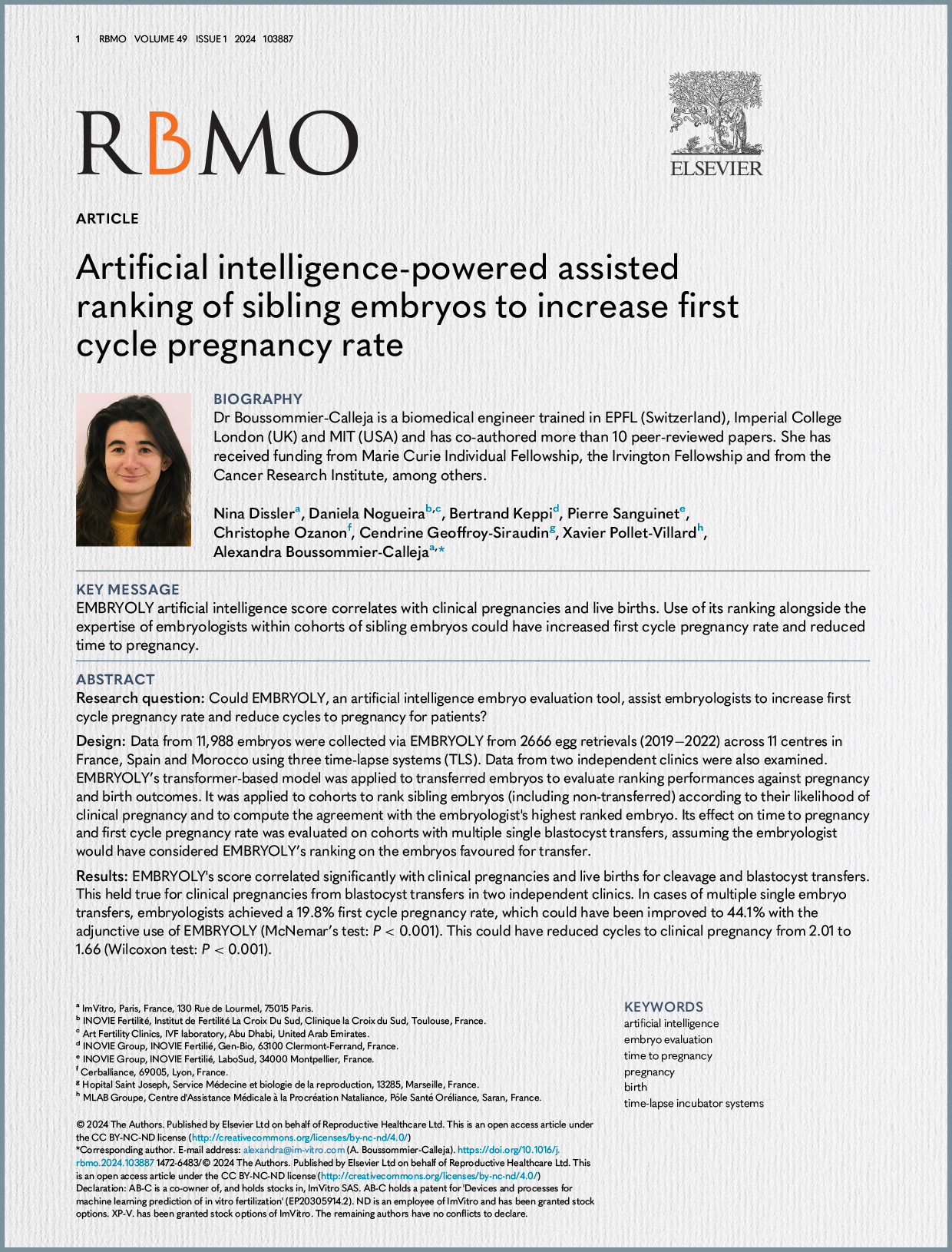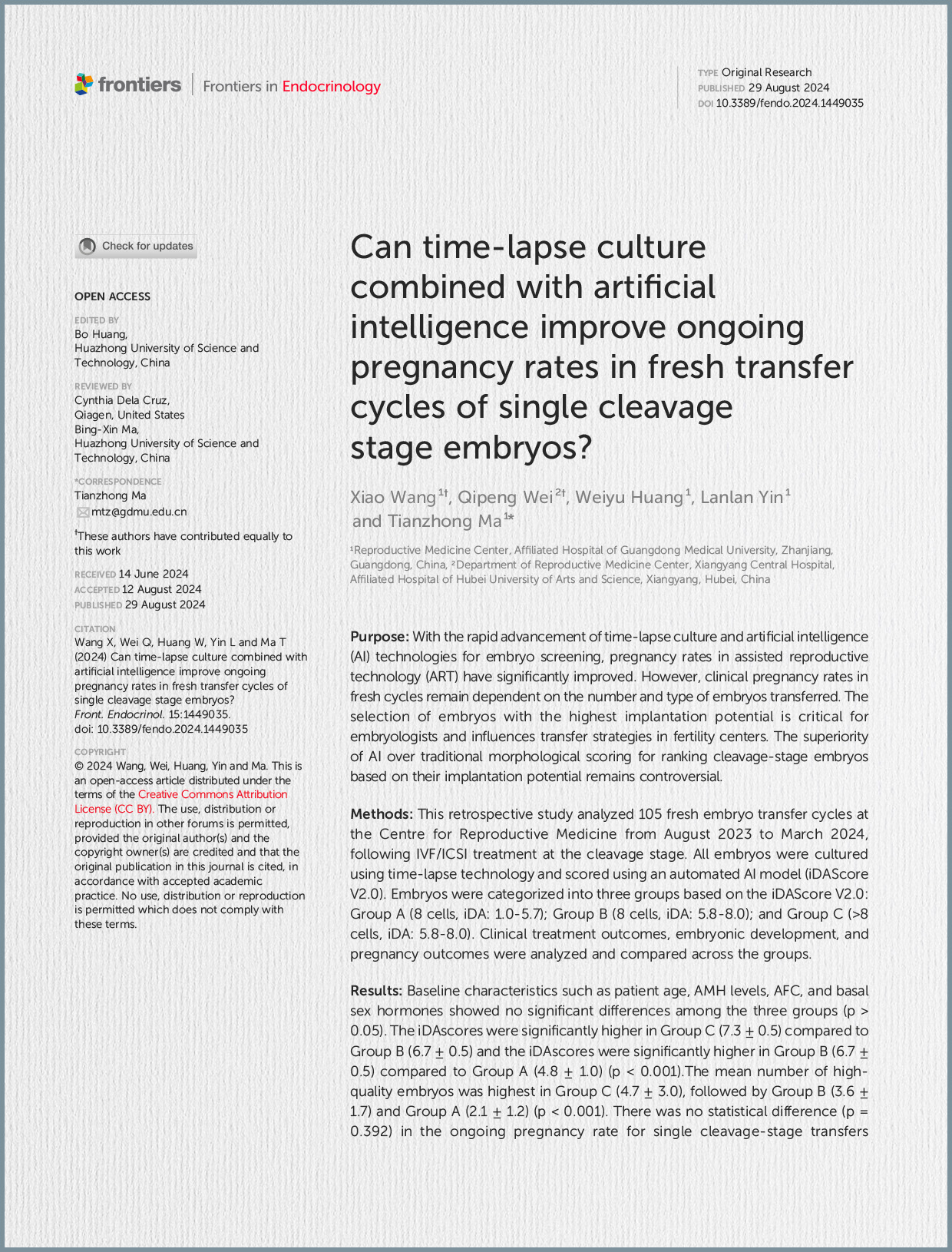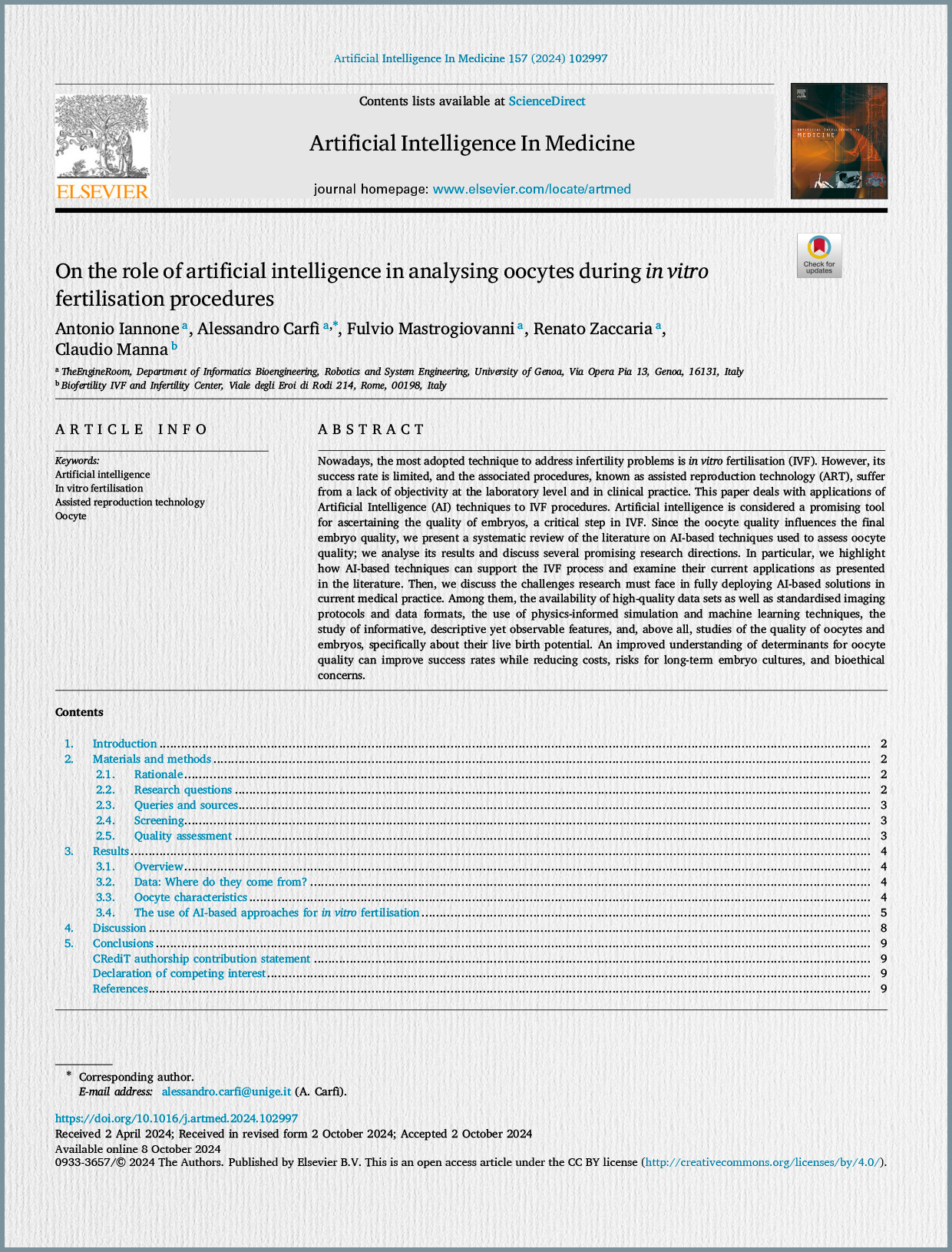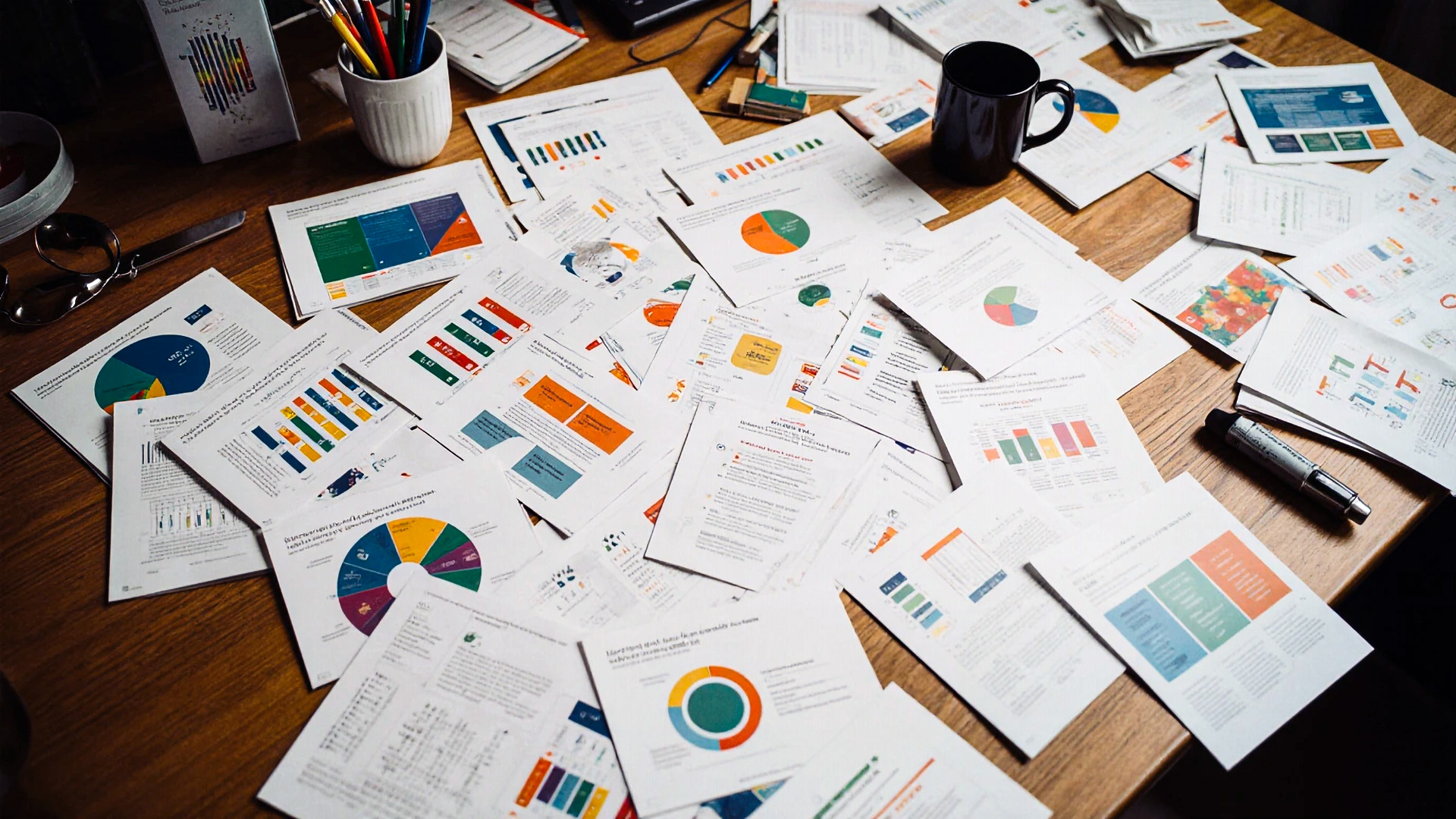Introduction to AI in ART: Promise vs. Reality
Infertility is a noteworthy concern in the contemporary era, with a global estimated prevalence of one in six couples struggling with it. Despite significant technological advancements in IVF, such as extended culture to the blastocyst stage and embryo vitrification which have improved implantation and cryopreservation outcomes, key performance indicators like fertilization and embryo survival rates have seen limited improvement. This stagnation is attributed to fragmented practices and insufficient standardization across IVF laboratories, underscoring the need for integration with “dry sciences” like AI.
AI holds immense potential to optimize clinical workflows and address inefficiencies in IVF. However, the adoption of advanced technologies like electronic witnessing systems and robust cryostorage tracking remains low, with the field still heavily reliant on paper records and manual processes. While the global AI market is projected for significant growth, its penetration in IVF remains modest compared to other medical sectors. Despite concerns regarding ethics, efficiency, and acceptance, most embryologists view the integration of AI as inevitable and potentially beneficial.
How AI in Medicine Inspires Applications in Reproductive Medicine
AI’s evolution from decision-making models to its integration into healthcare has revolutionized clinical reasoning, offering objectivity over human biases and experience. AI currently impacts healthcare through rapid image interpretation, workflow efficiency, and patient empowerment via applications and wearables. These innovations are increasingly relevant to ART, where AI-powered tools can educate patients via chatbots and manage secure documentation.
Embryologists face increasing workplace complexity, staff shortages, and data management challenges, making AI an indispensable tool for improving workflow, standardization, and decision-making. Just as automated systems track driver fatigue, AI can assist embryologists by reducing distractions and enhancing precision. AI’s success in radiology and pathology, particularly in image interpretation and standardization, highlights its potential for addressing similar challenges in IVF, especially in morphological assessments. AI also extends to precision tasks in robotic surgery and single-cell procedures on gametes and embryos, relying on automation to enhance outcomes and reduce variability. Beyond image analysis, AI can optimize dose regimens and predict adverse drug events, with similar approaches now being applied in ART to personalize ovarian stimulation protocols and improve cycle management.
AI research in reproductive medicine has seen a modest but steady incline in publications over the past few years. However, a significant proportion of these publications are reviews or commentaries rather than original research, and many studies lack a clear emphasis on outcome-driven differences or tangible clinical applications, limiting their relevance to real-world IVF practices.
AI Applications in ART: Key Domains
The article delineates AI’s potential applications across various stages of the IVF procedure:
- AI in Clinic and Cycle Management:
- Patient Selection and Management: AI systems like Fenomatch use facial biometrics to help patients select donors.
- Clinical Result Management: PGTai uses AI to provide precise chromosomal profiles from blastocyst biopsies, minimizing noise in next-generation sequencing data and improving the reliability of embryo selection.
- Workflow Optimization: Companies like Cercle.AI provide AI-driven data pooling solutions for image processing, patient onboarding, treatment planning, and predictive analytics. FertilAI offers automated cycle management tools to optimize trigger timing and frozen embryo transfer scheduling, streamlining workloads.
- Patient Preparation: Future Fertility has developed tools to predict implantation by evaluating endometrial thickness and receptivity with greater accuracy. Folliscan uses deep learning to monitor follicular development via ultrasound, providing recommendations for trigger timing and reducing procedure time.
- AI in Andrology (Semen Analysis & Sperm Selection):
- AI has revolutionized semen analysis, building upon Computer-Assisted Sperm Assessment (CASA). It enhances sperm selection by reducing human error and offering objective and standardized assessments of sperm quality.
- AI-powered tools excel at classifying sperm morphology, identifying subtle defects with high accuracy, with some automated classifiers achieving up to 94% accuracy rates.
- There is also promise for future DNA fragmentation analysis to identify viable sperm with intact genetic material.
- Narrow AI is already commercially used in CASA systems to evaluate sperm kinematics, debris, and agglutination.
- For Intracytoplasmic Sperm Injection (ICSI), AI tools like SiD (Sperm Identification) offer real-time sperm selection, correlating motility parameters with improved fertilization and blastocyst rates, showing comparable results to experienced embryologists.
- AI is also advancing sperm identification in testicular samples, reducing search times for embryologists during micro-testicular sperm extraction procedures.
- AI marks a shift towards objective, standardized methods for oocyte assessment, enhancing precision and reproducibility in IVF.
- AI-driven algorithms are pivotal in analyzing digital oocyte images, offering promising predictions of oocyte viability. An example is Violet, an AI algorithm with up to 90% accuracy in predicting fertilization outcomes from a single image, by analyzing subtle features like dimensions, shape, anomalies, and zona pellucida characteristics.
- AI also aids specialized procedures like ICSI by identifying optimal injection sites, guiding tool positioning, and confirming membrane breakage, thus reducing damage risk during needle punctures.
- Innovating Embryo Selection:
- AI-based tools offer a standardized, non-invasive approach to prioritizing high-quality embryos for transfer. Models trained on large datasets analyze morphological features to estimate the likelihood of pregnancy.
- ERICA, an AI system trained on day 5 embryo images, predicts ploidy potential and probability of pregnancy, with studies suggesting it may surpass human embryologists in accuracy.
- Time-lapse incubators support AI-driven embryo selection by providing continuous, non-disruptive monitoring.
- AI tools like KIDScore, Eeva, Life Whisperer, and FertilAI provide decision support for embryo selection. Retrospective studies link time-lapse parameters with embryo viability, aneuploidy status, and pregnancy rates.
- However, despite AI reducing assessment time and standardizing evaluations, current evidence does not conclusively show better clinical outcomes compared with traditional methods. Some critics warn against overhyping these technologies. A randomized controlled trial found AI to be non-inferior to manual methods but noted its speed advantage and reduced variability. Large prospective trials are still needed, but AI-assisted embryo selection could potentially reduce the number of embryos transferred and improve first-transfer success rates.
- AI and Automation of ART:
- Automation aims to address the shortage of embryology expertise by reducing reliance on traditional tasks, allowing embryologists to focus on higher-level responsibilities.
- Two main approaches to automation include microfluidics for autonomous IVF processes (e.g., sperm preparation, vitrification) and modeling automation on embryologists’ activities (e.g., pipetting, fluid handling).
- AI, with computer vision, deep learning, and neural networks, enhances automation by improving efficiency, accuracy, and consistency, and reducing variability between IVF centers and operators. This standardization may make fertility care more affordable and accessible.
- Automated ICSI robots have successfully injected human oocytes, leading to births from partially automated ICSI. Other AI-powered robotic systems have performed remote automated ICSI with comparable outcomes to manual methods.
- Automation is expanding into sperm preparation, oocyte retrieval and denudation, dish preparation, and cryopreservation, with several startups developing and commercializing these technologies.
AI in Research
IVF laboratories generate vast amounts of data, though it’s often difficult to access or share. AI systems are expected to produce increasingly accurate classifications by accessing “big data,” potentially offering answers for patients without clear diagnoses and recommending specific therapies or optimal timeframes for critical tasks like ovarian stimulation or embryo transfer. AI is increasingly used in IVF research to correlate -omics data with clinical outcomes, enabling a deeper understanding of genetic and biochemical factors influencing embryo viability, ovarian response, and implantation. However, the full promise of this field remains unrealized. It’s crucial for AI systems to provide explainability, offering insights into what the model is analyzing, enabling AI-empowered decisions. The deployment of automation technologies could standardize processes and outcomes across sites, facilitating the collection of consistent datasets.
Drawbacks and Limitations of AI in Medicine and IVF
Despite its potential, AI adoption in IVF remains slow due to several drawbacks:
- High Implementation Costs: Significant investment in technology and personnel development is required.
- Safety and Reproducibility Concerns: Questions persist regarding the safety and reliability of AI software.
- Data Security and Privacy: AI’s dependence on large datasets makes it vulnerable to breaches, raising notable risks, especially in regions with inconsistent privacy laws. Protecting patient privacy poses significant ethical and legal challenges.
- Bias in AI Models: AI systems may perpetuate disparities if trained on non-representative datasets, potentially impacting outcomes for specific populations.
- Erosion of Expertise: Over-reliance on AI could potentially reduce clinicians’ and embryologists’ decision-making skills. A co-convergence of human and AI inputs is essential for quality management.
- Transparency (“Black Box” Problem): Many AI systems operate as “black boxes,” which could erode trust and lead to errors if outputs are misinterpreted or blindly adopted.
- Ethical Concerns: AI’s role in embryo selection and genetic predictions raises questions about “designer babies” and may lead to societal pushback, complicating patient counseling and informed consent.
- Integration Challenges: Diverse IVF protocols and equipment can hinder AI integration, causing inefficiencies or errors.
- Limited Generalizability: Many algorithms have been tested on limited populations, making their effectiveness when applied to the general population questionable, thus reducing validity and reliability.
- Sustainability Concerns: The rapid expansion of data centers required for AI’s massive databases and energy-intensive computational processes raises significant environmental concerns, with estimated electrical consumption increasing dramatically.
Regulation in AI
AI in healthcare presents significant regulatory challenges, balancing safety with innovation. The WHO highlights interconnected challenges, including patient consent, data protection, and cybersecurity. While frameworks like HIPAA and GDPR address data privacy, gaps exist for unregulated data, and cyberattacks increasingly threaten healthcare institutions. Legal liability remains a concern due to AI’s opacity, complicating the attribution of responsibility.
Globally, AI regulation for Software as a Medical Device (SaMD) struggles to adapt to autonomous, evolving technologies. Progress in harmonizing standards is slow, despite efforts like the US-EU Trade and Technology Council’s voluntary AI code of conduct. Leading jurisdictions have adopted provisions for good machine learning practices, but inconsistent terminology and definitions hinder global integration. The FDA has approved nearly 1000 AI-enabled devices, primarily in radiology and cardiology, but adaptive AI systems challenge traditional regulatory pathways. The EU AI Act, the first major comprehensive AI regulation, emphasizes patient safety, data governance, and ethical use. The UK’s Medicines and Healthcare products Regulatory Agency has improved post-market surveillance.
Despite advancements, regulatory gaps persist, as frameworks often lag behind AI’s rapid evolution, and global harmonization remains limited. Ethical concerns require adaptive and collaborative solutions. The Croatia Consensus offers best practices for validating AI in ART, emphasizing standardized data collection, robust privacy measures, staff training, and ethical use.
Conclusion and Future Outlook
The widespread implementation of AI in IVF remains elusive, despite the clear and pressing need for tools to enhance the effectiveness, consistency, and accuracy of clinicians’ and embryologists’ work. This slow adoption reflects that, without demonstrable and significant advantages, new technology in IVF is rarely adopted rapidly. Historically, it takes at least 7-10 years for new medical technologies to reach financial equilibrium and often a generation for true acceptance.
For AI to truly transform IVF, it must not only perform but also inspire trust, integrate seamlessly into daily workflows, and deliver measurable improvements in patient outcomes, achieving more than just non-inferiority. Simplicity, accuracy, and affordability are non-negotiable. While AI solutions hold considerable scientific promise and persistent hype, they have yet to consistently demonstrate the tangible benefits needed to justify systematic adoption. The path forward demands transparency, clear regulations, and an intuitive fit within current IVF laboratory practices.
Real-world benefits, such as faster, more accurate results, improved outcomes, and increased IVF success, must be evident. The human element—clinicians and embryologists—remains indispensable. Without their willingness to embrace AI, share high-quality data, and collaborate in refining these tools, AI’s progress in ART will stall. Trust, collaboration, and a shared vision for the future are vital for AI to achieve its full potential as a transformative force in reproductive medicine. The future hinges on balancing technological innovation with the needs, expectations, and expertise of the professionals it aims to support.
